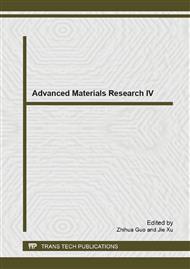p.158
p.163
p.167
p.172
p.177
p.182
p.186
p.192
p.201
Spectrum Processing of Positron Annihilation Lifetime Spectroscopy Based on the Model of Traps
Abstract:
It is known that positron annihilation lifetime spectroscopy (PALS) maintains a strong position among the matters structure research methods. This method is based on the positron lifetime registration implanted into the test substance. One of the models describing the positron behavior in the given medium is a model of traps. Developed by Brandt, Berko and Walker in the 1960s, this model is still relevant in the present times. The basis of this model is the system of kinetic equations describing the various options of positron annihilation in the medium. The objective of the current research was to relate these equations with the parameters obtained while processing the PALS spectrum. In the given article it is presented a program for processing the time spectrum using the model traps, comparative analysis using different ways of processing and some data on the mentioned analysis respectively.
Info:
Periodical:
Pages:
177-181
Citation:
Online since:
February 2014
Authors:
Price:
Сopyright:
© 2014 Trans Tech Publications Ltd. All Rights Reserved
Share:
Citation:


